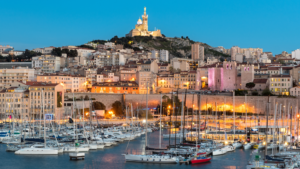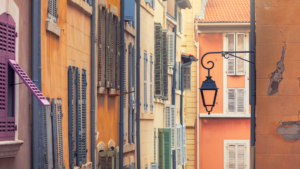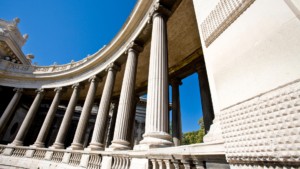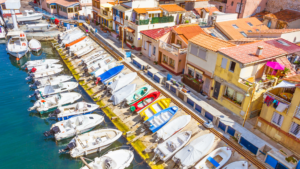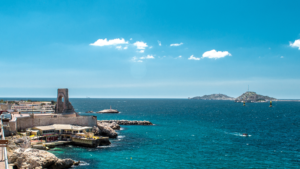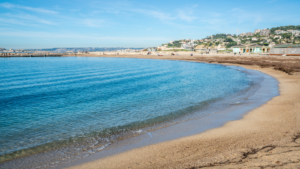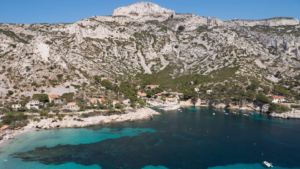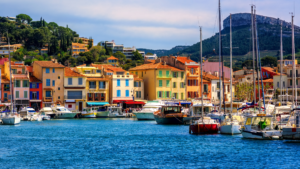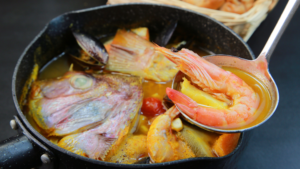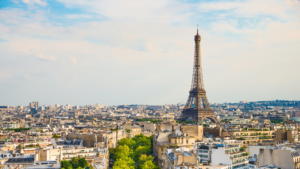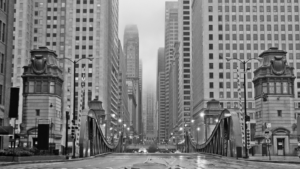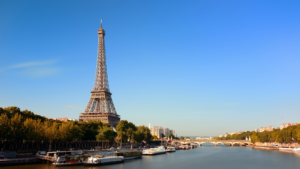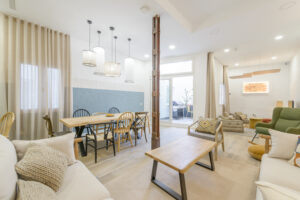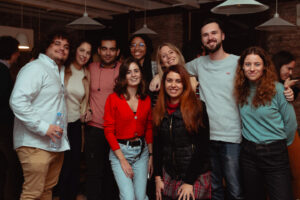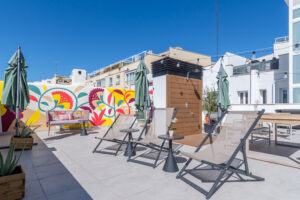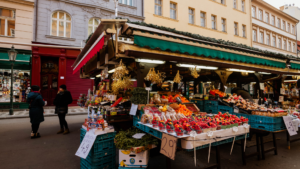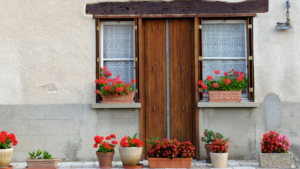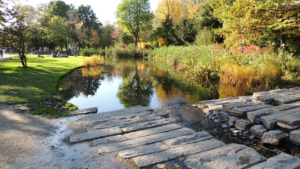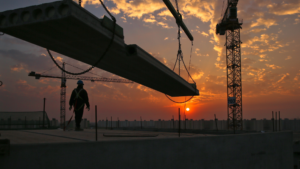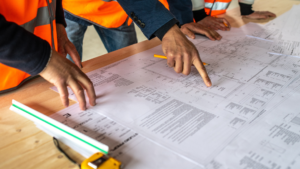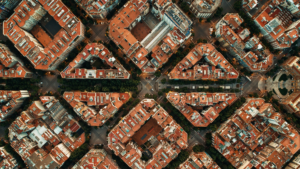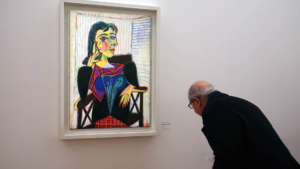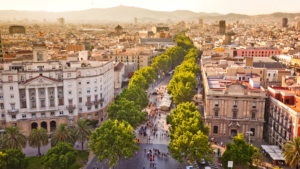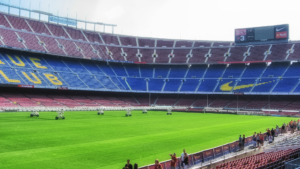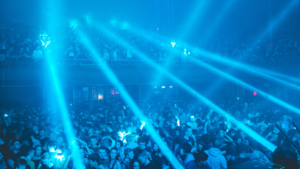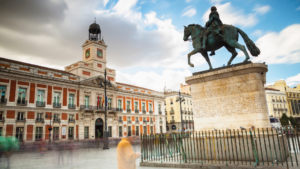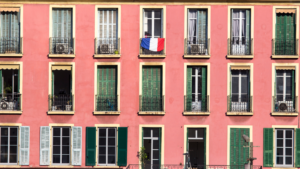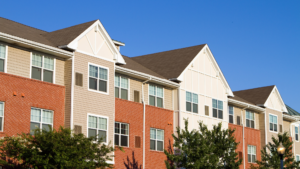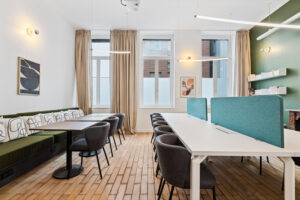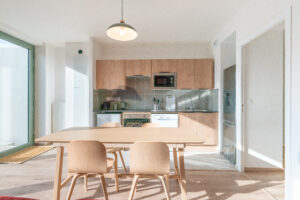Discover Marseille: Top 15 Things to Do in Marseille
Marseille, France’s oldest city, offers an enticing blend of history, culture, and stunning Mediterranean landscapes. From its vibrant ports to historic landmarks, this city is brimming with tons of activities to try. Here are the top 15 things to do in Marseille!
1. Vieux-Port de Marseille
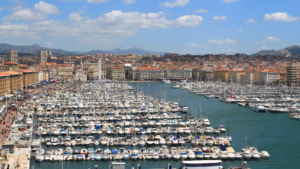
The iconic Vieux-Port is the beating heart of Marseille. A hub of activity since 600 BC, this port is where fishermen sell their daily catch. You can explore the fish market in the morning, and as the day progresses, enjoy a walk along the marina, dotted with picturesque cafes and boats.
A Ferris wheel offers panoramic views of the city, and boat tours from the port provide a glimpse of the coastline’s beauty. Dining here means savoring fresh seafood with a view of the bustling harbor.
2. Basilique Notre-Dame de la Garde
Notre-Dame de la Garde, or “La Bonne Mère,” looks over Marseille from its highest point. This basilica combines Romanesque and Byzantine styles and is topped with a golden statue of the Virgin Mary. Inside, it’s decorated with mosaics and maritime ex-votos.
“Maritime ex-votos” are tokens of thanks given by sailors for safe journeys or rescues at sea. These tokens include small ship models and paintings that show ships surviving dangerous situations. They’re left at the basilica to show gratitude to the Virgin Mary, who is seen as a protector of those who travel on the sea.
Visitors can climb or drive up to enjoy sweeping views of Marseille and the sea. The site is a must-visit for its architectural beauty and the panoramic vistas it offers.
3. Le Panier District
Le Panier, Marseille’s oldest neighborhood, is a captivating maze of narrow streets. It’s an area soaked in history, with a thriving arts scene and quaint architectural beauty. Le Panier’s bohemian, relaxed atmosphere also makes it the perfect spot for a leisurely afternoon stroll.
We recommend exploring the many art galleries, boutiques, and cafes that line the streets. Don’t miss the Vieille Charité, a historic building that now hosts impressive exhibitions!
4. MuCEM – Museum of European and Mediterranean Civilizations
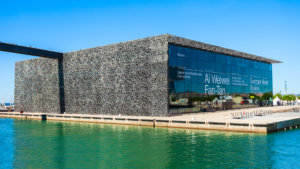
MuCEM stands by the sea, connecting the old Fort Saint-Jean with the modern Joliette district. This museum, a marvel of contemporary architecture, focuses on the diverse civilizations that have shaped the Mediterranean.
Its exhibitions range from historical artifacts to contemporary cultural issues. After visiting, head to the rooftop for stunning views of the sea and cityscape.
5. Calanques National Park
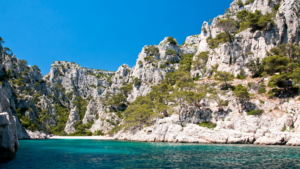
A short trip from the city center, Calanques National Park offers dramatic landscapes of cliffs and turquoise waters. It’s an adventurer’s paradise, accessible by land or sea. Hike through its trails for secluded spots ideal for swimming, or take a boat tour to explore its inlets.
Visiting in the cooler months of spring and early autumn is ideal to avoid the summer crowds and enjoy the park’s natural beauty.
6. La Corniche
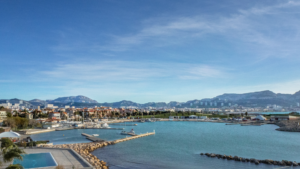
La Corniche is a scenic waterfront road that offers some of the best views in Marseille. Stretching along the Mediterranean, it’s a favorite for both locals and tourists. Walk, bike, or drive along this picturesque route to see stunning seascapes and luxurious mansions.
Stop by Vallon des Auffes, a traditional fishing village tucked within the city, where you can dine at seafood restaurants right by the water. This might be the best place in the whole city to catch the sunset!
7. Marseille History Museum
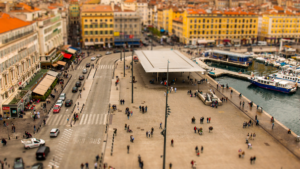
Explore the extensive history of Marseille’s at the Marseille History Museum. Located near the bustling Centre Bourse, this museum showcases artifacts dating back to the city’s foundation as a Greek port to its current status as a French cultural hub.
Key exhibits include remnants of the ancient port and a comprehensive overview of local history. The museum’s glass floor offers a unique view of archaeological sites below, helping you to easily envision the old port construction and layout.
8. Palais Longchamp
Palais Longchamp is a magnificent monument built to celebrate the Durance River’s water being channeled to Marseille. This engineering feat highlights the city’s historical prowess in infrastructure. The grand palace now houses both the Museum of Fine Arts and the Natural History Museum, and it’s surrounded by a beautifully landscaped park.
Explore the lush gardens, fountains, and sculptures, or delve into the art and natural history collections housed within. This site is a perfect blend of culture and gorgeous landscapes, and it is definitely a site you don’t want to miss.
9. Le Château d’If
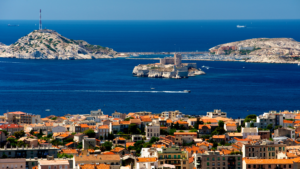
Just off the coast of Marseille lies Le Château d’If, a fortress turned prison made famous by Alexandre Dumas’ novel “The Count of Monte Cristo.” This historic island offers a glimpse into the harsh conditions of prison life in the past and provides stunning views back to Marseille.
Ferries to the island depart regularly from Vieux-Port. Exploring this fortress is a must for readers and history enthusiasts alike.
10. Cours Julien and La Plaine
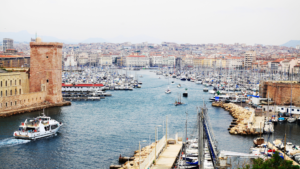
For a taste of local life, visit Cours Julien and La Plaine, animated areas known for their street art, markets, and nightlife. These neighborhoods pulse with energy, offering eclectic shops, cafes, and some of the city’s best nightlife spots.
Enjoy the lively atmosphere at the open-air markets where you can find everything from vintage clothes to fresh produce. At night, the areas come alive with bars and clubs that showcase a diverse range of music and entertainment.
11. Marseille Opera House
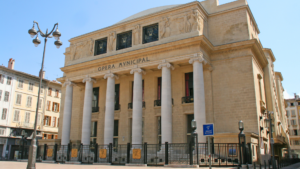
The Marseille Opera House is a prime example of architectural elegance and cultural heritage. Located in the heart of the city, it hosts a range of performances from opera to ballet and concerts. The building itself, with its grand facade and ornate interior, is worth a visit.
Check the schedule and perhaps catch a show, or simply admire the intricate details of the opera house during a guided tour. The experience will give you a taste of Marseille’s rich artistic culture.
12. Shopping in Les Terrasses du Port

Les Terrasses du Port is a modern shopping haven located right on the waterfront, offering spectacular sea views alongside a wide array of shops and restaurants. This mall is perfect for those looking to combine retail therapy with leisure, boasting high-end brands as well as local boutiques.
We recommend grabbing a bite at one of the terrace restaurants or cafes, where you can relax and soak in the views of the Mediterranean. Whether you’re looking for fashion, tech gadgets, or unique souvenirs, Les Terrasses du Port will definitely have something to offer.
13. Vallon des Auffes
Vallon des Auffes is an idyllic fishing village nestled within Marseille’s city limits. The area is characterized by its small fishing boats and traditional fisherman’s houses. Despite its proximity to the city center, Vallon des Auffes feels like a step back in time.
Dine at one of the local seafood restaurants to taste fresh catches of the day, often prepared in traditional Provençal style. The laid-back ambiance and one-of-a-kind views make it a must-visit for a peaceful escape from the bustling city.
14. Stade Vélodrome

Stade Vélodrome is not only the home of Olympique de Marseille, one of France’s most famous football clubs, but also a key cultural landmark. The stadium is one of the largest in Europe and offers an electrifying atmosphere on game days.
Tour the stadium to learn about its history and the club’s notable achievements. If you can, catch a game to experience the passionate support of the local fans firsthand – an unforgettable experience for sports enthusiasts.
15. Frioul Islands
The Frioul Islands, accessible by a short ferry ride from Marseille, offer a mix of beautiful landscapes and historical sites. These islands are perfect for hiking, swimming, and exploring the remains of Marseille’s old historical defenses. The islands also host diverse plant species, making them a great spot for nature lovers.
On the Frioul Islands, you also have the opportunity to visit the Caroline Hospital. This hospital is a previously quarantined facility built in the 19th century for yellow fever patients. Today, the hospital is a historic site that provides insights into past medical practices and the measures taken to protect Marseille from epidemics.
Photo Credits:
- All photos used through Canva Free Media License
